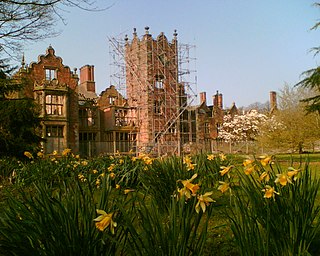 W
WThis is a list of listed buildings in the United Kingdom.
 W
WThis List of canal basins in the United Kingdom is a list of articles about any canal basin in the United Kingdom.
 W
WThis List of canal junctions in the United Kingdom is an incomplete list of canal junctions in the United Kingdom that have articles in Wikipedia, in alphabetical order.
 W
WThis list of canal aqueducts in the United Kingdom covers aqueducts that have articles in Wikipedia. The actual number of canal aqueducts is much greater.
 W
WThe historic buildings of the United Kingdom date from prehistoric times onwards. The earliest are Neolithic buildings and these are followed by those of ancient, medieval and modern times, all exemplifying the architecture of the United Kingdom. Below is a list of important buildings and structures from the beginning until Georgian times.
 W
WThis list of tallest buildings and structures in Leicester ranks the loftiest buildings in Leicester, United Kingdom by height. In pole position within the city is the 17+ storey Cardinal Telephone Exchange, which rises 84 metres (276 ft). As of 2012 it is the United Kingdom's 54th tallest building. If constructed, the approved Westbridge Hotel Tower would reach 117 metres (384 ft), therefore becoming the city's tallest building. At 67 metres (220 ft) and 22–storeys, the Summit, a student accommodation tower on Eastern Boulevard, is the city's third tallest tower block since its completion in 2013. There are twelve buildings in the city rising 50 metres (164 ft) or more.
 W
WLists of lighthouses in the United Kingdom cover lighthouses, structures that emit light to serve as navigational aids, in the United Kingdom. They are organized by region. The list for Ireland includes both Northern Ireland and the Republic of Ireland.
 W
WMotorway service areas, also known as service stations and commonly abbreviated to MSAs are places where drivers can leave a motorway to refuel, rest, or take refreshments. Some also incorporate or adjoin hotels. Only 20 motorway services in the UK remain in the ownership of the Department for Transport and let on 50-year leases to private operating companies. The vast majority of motorway services in the UK are owned by one of three companies: Moto, Welcome Break and RoadChef and a developing chain of stations being constructed by Extra.
 W
WThese lists of piers in the United Kingdom describe piers on the coast and on the river Thames.
 W
WThe following list is for Public Houses commonly called "pubs" in the United Kingdom and elsewhere, entitled "Carpenter Arms." Some of these date back to the development of "true English Pubs" created by English alehouses.
 W
WThe following list of Restoration candidates itemises all 72 of the buildings at risk featured in the BBC TV series Restoration. The series was aired over three seasons in 2003, 2004 and 2006 with the aim of publicising and saving severely neglected buildings of heritage importance throughout the United Kingdom.
 W
WBritish royal residences are palaces, castles and houses occupied by members of the British royal family in the United Kingdom. Some, like Buckingham Palace and Windsor Castle, are owned by the Crown, while others like Balmoral Castle and Sandringham House are personally owned and have been passed down for generations. Some royal palaces, such as the Palace of Westminster are no longer residences. Some remain in irregular use for royal occasions, such as Hillsborough Castle in Northern Ireland.
 W
WBelow is a list of seaside resorts in the United Kingdom.
 W
WThis list contains all types of structures 150 metres (490 ft) in height or more, which is the accepted criterion for a building to qualify as a skyscraper in the United Kingdom.
 W
WThis is a list of road, railway, waterway, and other tunnels in the United Kingdom.
 W
WThe use of water power in Britain was at its peak just before the Industrial Revolution. The need for power was great and steam power had not yet become established. It is estimated that at this time there were well in excess of ten thousand watermills in the country. Most of these were corn mills, but almost any industrial process needing motive power, beyond that available from the muscles of men or animals, used a water wheel, unless a windmill was preferred.